RECOMMENDED AMMUNTION FOR USE IN THE PSG 22
BRAND | TYPE |
|---|---|
| Remington | |
| Federal | |
| CCI | |
| Aguila |
"*" indicates required fields

Maintenance and Wear Parts
POF has been manufacturing firearms and firearm components since 2002. Through extensive testing and use we have learned that almost any machine including all firearms will have certain parts that could occasionally require maintenance, adjustments or replacement. “Wearable” or “Consumable” parts are those parts that by their very nature, through use (functioning) will not maintain absolute factory specifications forever and will need to be monitored periodically for functionality and safety. Some of these parts may have a finite life cycle which could be affected by use, abuse, or maintenance.
To address these parts on our products, it is recommended that a POF firearm be disassembled and inspected by a certified POF armorer at least annually. Many of the problems that The Factory has encountered with customer’s returned firearms involve these “Wearable” or “Consumable” parts and or improper maintenance or cleaning.
“Wearable” or “Consumable” Parts
Springs
Springs are very important to the safe and reliable operation of any firearm. They tend to be one of the most overlooked parts when performing maintenance. When they become worn through use or age they tend to anneal or take a set (become weak). This can change or adversely affect the operation or reliability of the firearm. In addition, any spring can be damaged, weakened, worn, or broken based on the use or abuse of the firearm and therefore should be inspected regularly and replaced as needed.
Extractors
Extractors are a high use component that must function correctly every time the firearm feeds or extracts a cartridge from the chamber to complete the cycles of operation. Because of this they are considered a “Wearable” part and should be inspected regularly and replaced as needed.
Ejectors
Ejectors are also a high use component that must function correctly every time the firearm ejects a cartridge from the chamber. Because of this they are considered a “Wearable” part and should be inspected regularly and replaced as needed.
Op-Rods
Op-Rods operate any time the firearm is cycled. Again, depending on the use or abuse of the firearm this part can be subjected to high impact stress and should be inspected regularly and replaced as needed.
Firing Pins
The Firing Pin contacts the cartridge primer anytime a round is loaded and anytime the rifle is fired. This can cause impact stress to the face of the firing pin and therefore it should be inspected regularly and replaced as needed.
Cam Pins
A Cam Pins is a crucial component that operates every time the rifle is cycled and is the main component that locks and un-locks the action. This part is a high cycle component and therefore should be inspected regularly and replaced as needed.
Although we recommend that “Wearable” or Consumable” parts be inspected regularly it does not mean that these parts need to be replaced every time they are inspected. POF products are manufactured to the highest standards and tend to outlast other products on the market. To ensure long life and reliability of our products we recommend these inspections to insure continued reliability and long life of your POF product.
Our Service Department maintains a full complement of replacement parts. Even though most gunsmiths have the knowledge, training, and the ability to make necessary repairs to your firearm, the skill and workmanship of any particular 3rd party gunsmith is totally beyond our control.
Should your firearm ever require service, we strongly recommend that you return it to POF-USA. A firearm is a precision instrument and some replacement parts will require individual fitting to ensure correct operation. A wrong part, improper fitting, or incorrect mechanical adjustment may result in an unsafe condition or dangerous malfunction, damage to the firearm, or cause possible serious injury to the shooter or others.
POF-USA parts may only be installed in conjunction with: 1) Other parts that were designed and/or sold by POF-USA or 2) Parts that adhere to the safety and functional dimensional requirements of the M16, M4 carbine, or any subsequent variant military specifications or data packages.
IF ANY PART IS ORDERED WITHOUT RETURNING THE FIREARM TO POF-USA, the customer bears full responsibility for ensuring that the part supplied is correct for their particular firearm and is properly installed and fitted by a qualified gunsmith.
POF-USA IS NOT RESPONSIBLE FOR THE FUNCTIONING OF ANY FIREARM IN WHICH REPLACEMENT PARTS ARE INSTALLED BY OTHERS.
.308 A2-Style Buffer
5.31″ overall length

.308 A2-Style Action (Buffer) Spring
~12.5-12.75″ free length — 38-39 coils
![]()
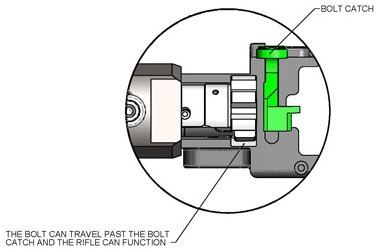
“MIL-SPEC” A2-Style Buffer
5.91″ overall length

“MIL-SPEC” Action (Buffer) Spring
~12.5-12.75″ free length — 43-44 coils
![]()

“NORMAL” mode
“SUPPRESSED” mode
By rotating the Gas Plug 180˚ clockwise from the “Normal Mode” position, you introduce a smaller hole for gas to travel through the Gas Block. Setting the Gas Plug to “Suppressed Mode” DOES NOT make the firearm any quieter, this mode simply compensates for the change in gas pressure to allow the firearm to cycle properly.
NOTE:
Putting a suppressor on your firearm changes the cycling characteristics of the host. In doing so causes unwanted malfunctions and increased wear on the system. Please be aware of all risk by attaching a suppressor.
“OFF” mode
By rotating the Gas Plug 90˚ counterclockwise from the “Normal Mode” position, gas travel through the Gas Block is blocked entirely. This prevents cycling, ejection, and feeding, turning your semi-auto rifle into a manual bolt-action rifle.
The standard upright position regulates gas pressure perfectly for unsuppressed fire.
Inverting the gas plug regulates gas pressure for proper operation with a suppressor.
Rotate the gas plug 90º (as shown) to prevent cycling all together. Your semi-auto is now a bolt-action!
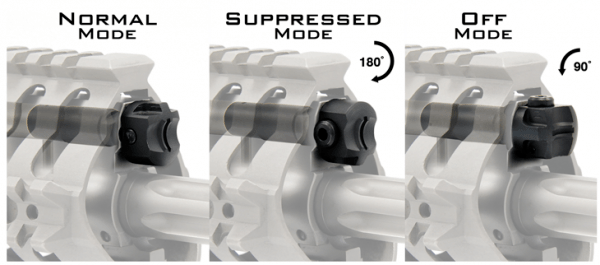
The notched side of the gas plug denotes that it is in “NORMAL” mode when it is facing up. The rifle should cycle normally with most commercial ammunition.
Depress the gas plug detent; rotate the gas plug 45° so the gas plug detent is facing at a 45° angle, this denotes that the gas plug is in ADVERSE mode using less gas to compensate for some ammunition.
Depressing the detent and rotating to the 90° position denotes that the gas plug is in “OFF” mode. This shuts off the gas from the gas block completely and causes the rifle to function as a single-shot rifle.
By depressing the gas plug detent and rotating the gas plug 180° from “NORMAL” mode, the smooth side of the gas plug is now facing up. The firearm is now in “SUPPRESSED” mode. Gas in this mode is restricted to compensate for the added backpressure from a suppressor. A second suppressed mode setting is available with an increased gas flow which may be required with some suppressors. Depress the gas plug detent and rotate the smooth face to a 45° angle, this denotes that the gas plug is in the “SUPPRESSED2” mode.
NOTE:
Putting a suppressor on your firearm changes the cycling characteristics of the host. In doing so causes unwanted malfunctions and increased wear on the system. Please be aware of all risk by attaching a suppressor.
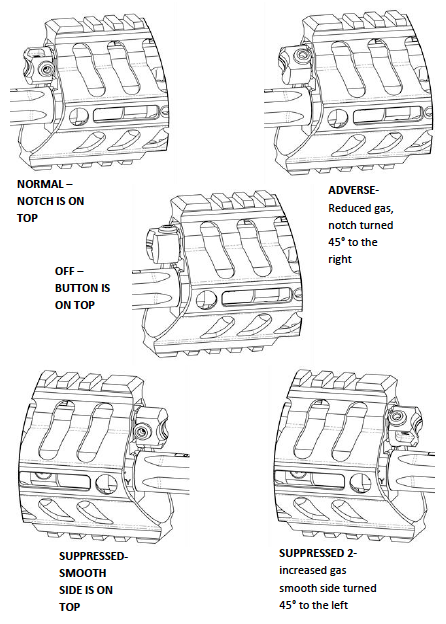
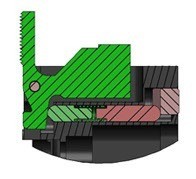



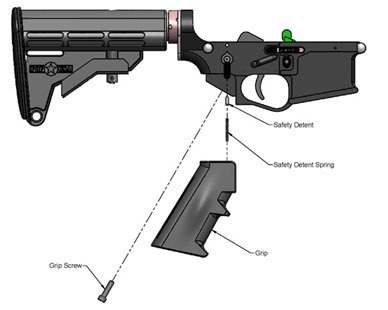
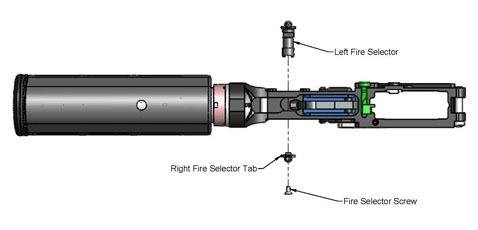
After each shooting session or 250 rounds, whichever comes first, or whenever your firearm has been exposed to sand, dust, extreme humidity, condensation, immersion in water, or other adverse conditions; disassemble, clean, and lubricate your firearm.
• Use only cleaning and lubrication products specifically designed for use on firearms.
• Do not use wire brushes on aluminum surfaces such as the upper/lower receivers, because this can scratch the finish.
• Follow all manufactures instructions and cautions when using cleaning and lubrication products.
• Wherever the term CLP (Cleaner-Lubricant-Protectant) or the words lube or lubrication are used in this manual, it is interpreted to mean that you can use any lubricant designed for use on firearms.
• Wherever propellant gases directly contact operating system parts, carbon will build up. Carbon cannot be removed with a brush and must be scrapped.
CLEANING FIREARMS, OR HANDLING AMMUNITION MAY RESULT IN EXPOSURE TO LEAD AND OTHER SUBSTANCES KNOWN TO CAUSE BIRTH DEFECTS, REPRODUCTIVE HARM, AND OTHER SERIOUS PHYSICAL INJURY. MAINTAIN ADEQUATE VENTILATION AT ALL TIMES. WASH HANDS THOROUGHLY AFTER EXPOSURE. SHOOTING OR CLEANING FIREARMS MAY EXPOSE YOU TO LEAD.
Contact Technical Support [email protected] or if you do not have access to email, you can call them at 623-561-9572. When contacting Technical Support always know the Serial Number of the firearm, the brand and type of ammo being used, the brand of magazine being used, and the setting of the gas system when your malfunction occurred.
The bolt carrier on the Revolution (CMR), Revolution DI, and Rogue, requires a longer stroke in order to clear the longer .308 cartridges and/or spent cases.
Because of this, these firearm models use a proprietary (longer) buffer tube as well as a proprietary buffer spring.
STANDARD LENGTH AR15/M16 CARBINE BUFFER TUBES (RECEIVER EXTENSIONS), AND BUFFER/ACTION SPRINGS WILL NOT WORK IN THE REVOLUTION, REVOLUTION DI, OR ROGUE MODELS.
DO NOT USE THEM, THEY WILL NOT WORK, AND YOU MAY DAMAGE YOUR FIREARM.
Download/view the file below for a visual representation of the correct buffer tube and spring to use in case you aren't sure.
• Use only cleaning and lubrication products specifically designed for use on firearms.
• Do not use wire brushes on aluminum surfaces such as the upper/lower receivers, because this can scratch the finish.
• Follow all manufactures instructions and cautions when using cleaning and lubrication products.
• Wherever the term CLP (Cleaner-Lubricant-Protectant) or the words lube or lubrication are used in this manual, it is interpreted to mean that you can use any lubricant designed for use on firearms.
• Wherever propellant gases directly contact operating system parts, carbon will build up. Carbon cannot be removed with a brush and must be scrapped.
Basic Procedures:
CLEANING FIREARMS, OR HANDLING AMMUNITION MAY RESULT IN EXPOSURE TO LEAD AND OTHER SUBSTANCES KNOWN TO CAUSE BIRTH DEFECTS, REPRODUCTIVE HARM, AND OTHER SERIOUS PHYSICAL INJURY. MAINTAIN ADEQUATE VENTILATION AT ALL TIMES. WASH HANDS THOROUGHLY AFTER EXPOSURE. SHOOTING OR CLEANING FIREARMS MAY EXPOSE YOU TO LEAD.

Note:
After extended use, it may become difficult to adjust the regulator. Below are the instructions for disassembly and cleaning. Note: The included diagram may be referenced for part descriptions and information.
• Use only cleaning and lubrication products specifically designed for use on firearms.
• Do not use wire brushes on aluminum surfaces such as the upper/lower receivers, because this can scratch the finish.
• Follow all manufactures instructions and cautions when using cleaning and lubrication products.
• Wherever the term CLP (Cleaner-Lubricant-Protectant) or the words lube or lubrication are used in this manual, it is interpreted to mean that you can use any lubricant designed for use on firearms.
• Wherever propellant gases directly contact operating system parts, carbon will build up. Carbon cannot be removed with a brush and must be scrapped.
CLEANING FIREARMS, OR HANDLING AMMUNITION MAY RESULT IN EXPOSURE TO LEAD AND OTHER SUBSTANCES KNOWN TO CAUSE BIRTH DEFECTS, REPRODUCTIVE HARM, AND OTHER SERIOUS PHYSICAL INJURY. MAINTAIN ADEQUATE VENTILATION AT ALL TIMES. WASH HANDS THOROUGHLY AFTER EXPOSURE. SHOOTING OR CLEANING FIREARMS MAY EXPOSE YOU TO LEAD.
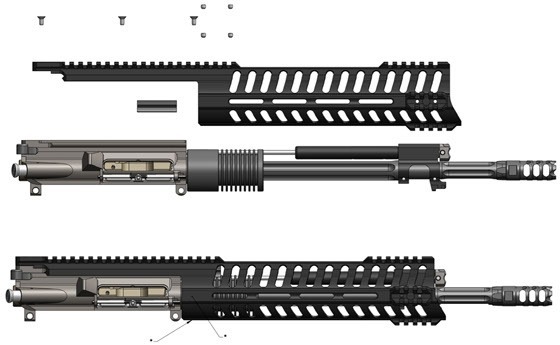
Please download the Attached PDF to view the POF-USA Fastener Guide.
For operation in “Normal” mode, the Gas Piston should be installed with two groved toward the front end of the barrel. This allows the firearm to use more gas to cycle the firearm.
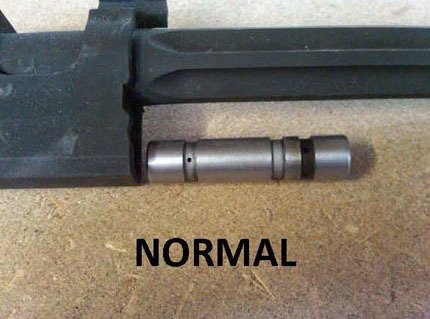
For operation in the “Suppressed” mode, the Gas Piston should be installed with two grooves toward the back end of the barrel. With one grove over the gas port instead of two, this allows the firearm to use less gas to cycle the firearm.
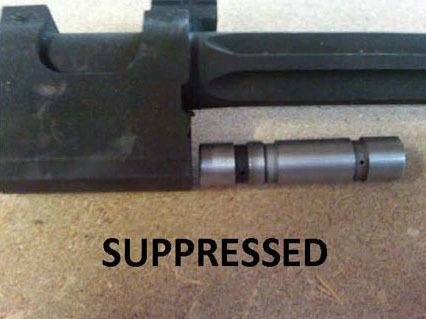
Magazines for all P-308, Revolution, and Rogue firearms: POF-USA only recommends the use of magazines that have anti-tilt followers in any of our .308 WIN, 6.5 Creedmoor, and 6MM Creedmoor caliber firearms. Currently the only magazines that have anti-tilt followers are:
a. Magpul Gen M3 PMAG
b. Lancer L7AWM
Use of any other magazines in .308 WIN, 6.5 Creedmoor, and 6MM Creedmoor caliber firearms may cause feeding or cycling issues.
Magazines for all P-415 EDGE, Renegade +, Minuteman, and Wonder firearms: POF-USA only recommends the use of magazines that have anti-tilt followers in any of our 5.56 NATO, 300 AAC Blackout, and 6MM ARC caliber firearms. Here are three examples of recommended magazines that have anti-tilt followers.
a. Magpul Gen M3 PMAG
b. Lancer L5AWM
c. Mission First Tactical
.308 Carbine Buffer 2.5″ overall length



.308 Carbine Action (Buffer) Spring
~10.25-10.5″ free length — 29-30 coils

.223 Carbine Buffer 3.25″ overall length



.308 A2-Style Buffer Spring
~12.5-12.75″ free length — 38-39 coils
![]()
The PSG 22 is a short barreled blow back operated 22 LR pistol. It is chambered for and designed to properly function with the .22 caliber Long Rifle rimfire cartridge. We only recommend the use of high velocity or hyper-velocity ammunition, manufactured to U.S. industry standards, in the PSG 22 for optimal function.
Due to its blow-back operation, a fast cycle of the action is required to achieve proper ejection, extraction and hammer reset. When we say "fast cycle" we are talking about the amount of burnt powder a fired case ignites to cycle back the bolt carrier. The PSG 22 needs as much gas pressure as possible to eject, extract, reset the hammer, and feed a new round, much like other 22 LR pistol.
Low pressure, lower powered, or low quality ammunition is often inconsistent and anything below High velocity will struggle to cycle properly when not fired suppressed.
POF recommends a break-in of around 500 rounds of high velocity such as those listed on the recommended ammunition list.
BRAND | TYPE |
|---|---|
| Remington | |
| Federal | |
| CCI | |
| Aguila |
If access to high velocity is not available, the use of standard velocity should suffice, but please avoid most match loads as they are very underpowered.
In many cases some subsonic ammunition has more pressure than some match loads. It is the nature of a match 22lr round to be sub-sonic as the bullet will stabilize better.
After the break-in period is complete the gun should run most all types of ammo. As is the case with most all 22lr firearms they are all independently picky.
Some experimenting will be necessary to find the best combo for YOUR gun.
YOUR gun will likely vary from any other that you pick up off the shelf. Even box to box, 22lr ammunition varies greatly.
The PSG 22 will also have issues cycling subsonic ammunition with the use of a suppressor. There is No guarantee that it will function properly WITHOUT a suppressor.
It takes time for some springs in this weapon to set and have a long life. This is not a .223 or a .308 where the bolt moves rapidly to take care of this in a few shots. It takes extra time with a 22lr.
BRAND | TYPE |
|---|---|
| Winchester |
|
| Federal |
|
| CCI |
|
*** Please note all the above information is not set in stone you may experience different results with your firearm. This list has been put together with the best of our ability with the ammo we have been able to test. As we are able to test more ammunition, we will update this list accordingly. ***
***POF-USA tests with Remington thunderbolts in a factory 10rd rotary mag before leaving the factory.***
WARNING:
POF-USA only recommends the use of factory new ammunition loaded in accordance with U.S. industry practice and cannot offer any advice or tips regarding hand loaded or
reloaded ammunition. Reloading is a science and improperly loaded ammunition can be extremely dangerous. Damages due to high pressure, reloaded, or non-standard ammunition is not covered under warranty.
Use only high-quality, original, factory-manufactured ammunition. Do not use cartridges that are dirty, wet, corroded, bent, or damaged. Do not oil cartridges. Do not spray aerosol-type lubricants, preservative, or cleaners directly onto cartridges or where excess spray may flow into contact with cartridges. Lubricant or other foreign matter on cartridges can cause potentially dangerous ammunition malfunctions. Use only ammunition of the caliber for which your firearm is chambered. The proper caliber is permanently engraved on your barrel; never attempt to use ammunition of any other caliber.
Death, serious injury and damage can result from the use of wrong ammunition; bore obstructions, powder overloads, or incorrect cartridge components. Always wear eye protection and hearing protection while discharging your firearm.
ONLY USE FACTORY AMMUNITION LOADED TO U.S. INDUSTRY STANDARDS
POF-USA SPECIFICALLY DISCLAIMS ANY RESPONSIBILITY FOR ANY DAMAGE OR INJURY WHATSOEVER OCCURING IN CONNECTION WITH, OR AS A RESULT OF, THE USE IN POF-USA FIREARMS OF FAULTY, OR NON-STANDARD, OR “REMANUFACTURED”, OR HAND LOADED (RELOADED) AMMUNITION, OR OF CARTRIDGES OTHER THAN THOSE FOR WHICH THE FIREARM WAS ORIGINALLY CHAMBERED.
DISCHARGING FIREARMS IN POORLY VENTILATED AREAS, CLEANING FIREARMS, OR HANDLING AMMUNITION MAY RESULT IN EXPOSURE TO LEAD AND OTHER SUBSTANCES KNOWN TO CAUSE BIRTH DEFECTS, REPRODUCTIVE HARM, AND OTHER SERIOUS PHYSICAL INJURY. MAINTAIN ADEQUATE VENTILATION AT ALL TIMES. WASH HANDS THOROUGHLY AFTER EXPOSURE. SHOOTING OR CLEANING FIREARMS MAY EXPOSE YOU TO LEAD.
It is important to note that the ejector for this platform is the left side feed lip, just like every other firearm that uses 10/22 style magazines.
Below are notes regarding our results with PSG 22 compatible magazines.
Ruger Rotary 10Rd AKA BX-1:
Most consistent but should be cleaned on a regular basis. Factory spring tension can be inconsistent. If the magazine is not dropping free it is due to inconsistencies in the mold of the magazine. A light 30 sec sanding on each side of the mag will reveal the high spots and then the mag will drop free no problem.
Ruger BX-25 / BX-15:
Known for inconsistent feeding and feeding related issues. The springs are inconsistent and get bound up and just in general are not linear. The only solutions for this are the quick fixes found online with a quick google search of BX-25 feeding issues or just trying out several mags till you find one that works well. Also, the ejector on this magazine is the smallest ejector on any mag we have tested. This leads to issues with ejection. The BX-25 is also the narrowest magazine and has side to side play.
Butler Creek Steel Lips:
Same issues with spring tension as BX-25. When buying new ones you can usually break it in by loading the magazine and letting set for 48 hours, unloading and repeat. Unfortunately, these mags are friction welded together so cleaning them is not really an option. These magazines tend to feed well and also have the biggest ejector out of any of the mags that we have tested.
Butler Creek Hot Lips:
Have plastic feed lips and are not recommended. Any 10/22 magazine with plastic feed lips like the old Ramlines and Promag mags are also not recommended. The plastic feed lips wears out due to the feed lips doubling as the weapons ejector.
Tactical Innovations:
Very smooth-running magazine, no spring tension issues in our experience. This magazine also has a very large ejector and is the tightest fitting in our mag well. They are friction welded and they are not very consistent, but they always lean on the wider side.
GSG Drum Mag:
Ours had horrible spring tension issues and we never could get the rounds to present well and could not do much testing with it.
Promag:
In testing a variety of the Promag magazines we noticed that every mag had different feed lips and ejectors. This caused major feeding and ejection issues. We never could get the rounds to feed and eject consistently and could not do much testing with them.
Any other magazines on the market we have not had the opportunity to test.
This maintenance supplement should help address all cleaning and maintenance issues with your PSG-22.
CLICK HERE TO DOWNLOAD THE PSG 22 CLEANING AND MAINTENANCE SUPPLEMENT.
After each shooting session or 250 rounds, whichever comes first, or whenever your firearm has been exposed to sand, dust, extreme humidity, condensation, immersion in water, or other adverse conditions; disassemble, clean, and lubricate your firearm.
• Use only cleaning and lubrication products specifically designed for use on firearms.
• Do not use wire brushes on aluminum surfaces such as the upper/lower receivers, because this can scratch the finish.
• Follow all manufactures instructions and cautions when using cleaning and lubrication products.
• Wherever the term CLP (Cleaner-Lubricant-Protectant) or the words lube or lubrication are used in this manual, it is interpreted to mean that you can use any lubricant designed for use on firearms.
• Wherever propellant gases directly contact operating system parts, carbon will build up. Carbon cannot be removed with a brush and must be scrapped.
CLEANING FIREARMS, OR HANDLING AMMUNITION MAY RESULT IN EXPOSURE TO LEAD AND OTHER SUBSTANCES KNOWN TO CAUSE BIRTH DEFECTS, REPRODUCTIVE HARM, AND OTHER SERIOUS PHYSICAL INJURY. MAINTAIN ADEQUATE VENTILATION AT ALL TIMES. WASH HANDS THOROUGHLY AFTER EXPOSURE. SHOOTING OR CLEANING FIREARMS MAY EXPOSE YOU TO LEAD.
1. Place receiver pivot pin in the open position.
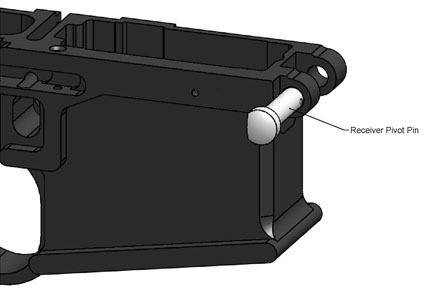
2. Insert 1/16″ (or smaller) punch or equivalent into receiver pivot pin hole and depress receiver pivot pin detent.
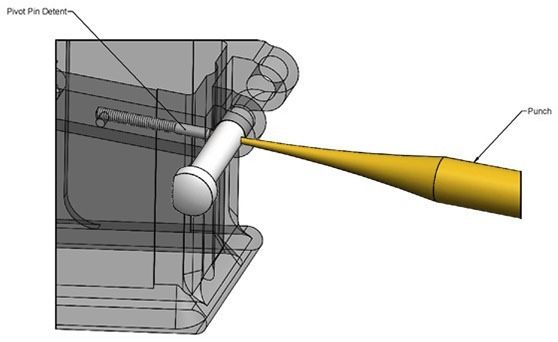
3. Slightly pull out the receiver pivot pin while removing punch.
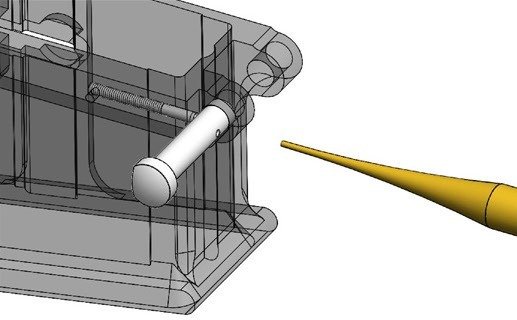
4. Fully remove the receiver pivot pin slowly. Remove pivot pin detent and pivot pin detent spring.
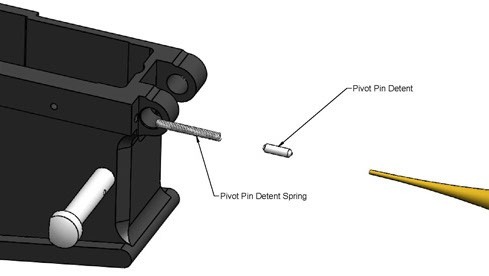
NOTE: Be sure not to lose pivot pin detent under spring pressure. Point the lower receiver down onto a table before removing the Pivot Pin to catch.
CLEANING FIREARMS, OR HANDLING AMMUNITION MAY RESULT IN EXPOSURE TO LEAD AND OTHER SUBSTANCES KNOWN TO CAUSE BIRTH DEFECTS, REPRODUCTIVE HARM, AND OTHER SERIOUS PHYSICAL INJURY. MAINTAIN ADEQUATE VENTILATION AT ALL TIMES. WASH HANDS THOROUGHLY AFTER EXPOSURE. SHOOTING OR CLEANING FIREARMS MAY EXPOSE YOU TO LEAD.

The Renegade and Renegade Plus use a unique mounting and locking system for the handguard. The narrow profile handguard is slipped over the barrel nut and locked horizontally into place using two QD sling mount blocks: one on the right side and one on the left side. Additionally, two clamp screws located at the bottom of the handguard are tightened to effectively clamp the handguard into place.
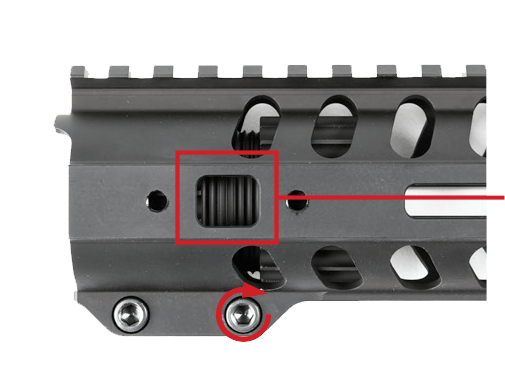
Once the handguard is slid into position the cutout in the barrel nut should be visible in the window of the handguard as shown here.
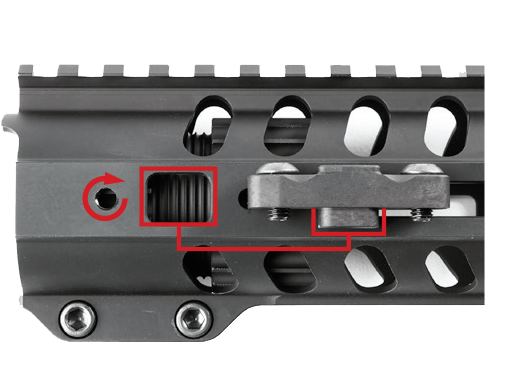
The square “block” on the sling mount will fit into the window of the handguard and “lock” into the barrel nut. While holding the block forward against the barrel nut, the two screws are then tightened on the QD sling mount block to 25 inch-pounds. This process must be followed on both the right and left side of the weapon.
CLEANING FIREARMS, OR HANDLING AMMUNITION MAY RESULT IN EXPOSURE TO LEAD AND OTHER SUBSTANCES KNOWN TO CAUSE BIRTH DEFECTS, REPRODUCTIVE HARM, AND OTHER SERIOUS PHYSICAL INJURY. MAINTAIN ADEQUATE VENTILATION AT ALL TIMES. WASH HANDS THOROUGHLY AFTER EXPOSURE. SHOOTING OR CLEANING FIREARMS MAY EXPOSE YOU TO LEAD.
The bolt on the Revolution (CMR), Revolution DI, and Rogue, has been redesigned.
Due to the nature of the redesign, the first version (V1) of the bolt and firing pin will not be compatible with the the current version (V2).
Download/view the file below for a visual representation and explanation of and for the differences.
POF-USA and Mil-Spec AR-15/M-16/5.56/2.23 charging handles are compatible with the Revolution and Rogue platforms. Some other manufacturer's charging handles may not be compatible with the Revolution and Rogue platforms due to them using different internal geometry than Mil-Spec. This difference can cause the carrier key to impact the channel of the charging handle resulting in damage to the charging handle and/or the firearm in the indicated area.
The CMR/Revolution is a new model in the Patriot Ordnance Factory line of firearms. With the help of customer feedback and our own internal testing we have discovered that the orientation of the extractor spring is important to the functioning/cycling of the weapon. If you experience jams and ejection failures, especially after cleaning the bolt, then you should re-check the orientation of the spring in the extractor. The extractor spring has a small end and a large end. If the small end of the spring is placed into the pocket then the spring can work loose and either sit at an angle or completely come out of the pocket. The result is malfunctioning in extraction and feeding.
It is important that you install the selector before installing the KNS pins. You may break the tail of the trigger if you try to force the selector into the lower receiver after the KNS pins have been installed.
DISCLAIMER:
· The following installation process should only be performed by a certified POF-USA Armorer or gunsmith. Please contact a certified POF-USA Armorer or gunsmith for assistance.
· POF-USA parts may only be installed in conjunction with: 1) Other parts that were designed and/or sold by POF-USA or 2) Parts that adhere to the safety and functional dimensional requirements of the M16, M4 carbine, or any subsequent variant military specifications or data packages.
· Trigger components must be cleaned and maintained every 250 rounds, or after every shooting session, whichever comes first. Failure to properly clean and maintain the firearm and its components according to the cleaning procedure found in the support section of www.pof-usa.com can lead to damage to the firearm, bodily injury or death to the shooter or bystanders.
· POF-USA does not recommend the use of this drop-in trigger in any 9MM, 40 S&W, 45 ACP, 10MM, or any other Pistol Caliber Firearm. The use of this drop-in trigger in any Pistol Caliber Firearm can lead to damage to the trigger, the firearm, and cause bodily injury or death to the shooter or bystanders. The use of this drop-in trigger in any Pistol Caliber Firearm will VOID the triggers warranty.
CLEANING FIREARMS, OR HANDLING AMMUNITION MAY RESULT IN EXPOSURE TO LEAD AND OTHER SUBSTANCES KNOWN TO CAUSE BIRTH DEFECTS, REPRODUCTIVE HARM, AND OTHER SERIOUS PHYSICAL INJURY. MAINTAIN ADEQUATE VENTILATION AT ALL TIMES. WASH HANDS THOROUGHLY AFTER EXPOSURE. SHOOTING OR CLEANING FIREARMS MAY EXPOSE YOU TO LEAD.It is important that you do not attempt to remove the selector before removing the KNS pins. You may break the tail of the trigger if you try to force the selector out without removing the KNS pins.
WARNING:
Maintenance and Wear Parts
POF has been manufacturing firearms and firearm components since 2002. Through extensive testing and use we have learned that almost any machine including all firearms will have certain parts that could occasionally require maintenance, adjustments or replacement. “Wearable” or “Consumable” parts are those parts that by their very nature, through use (functioning) will not maintain absolute factory specifications forever and will need to be monitored periodically for functionality and safety. Some of these parts may have a finite life cycle which could be affected by use, abuse, or maintenance.
To address these parts on our products, it is recommended that a POF firearm be disassembled and inspected by a certified POF armorer at least annually. Many of the problems that The Factory has encountered with customer’s returned firearms involve these “Wearable” or “Consumable” parts and or improper maintenance or cleaning.
“Wearable” or “Consumable” Parts
Springs
Springs are very important to the safe and reliable operation of any firearm. They tend to be one of the most overlooked parts when performing maintenance. When they become worn through use or age they tend to anneal or take a set (become weak). This can change or adversely affect the operation or reliability of the firearm. In addition, any spring can be damaged, weakened, worn, or broken based on the use or abuse of the firearm and therefore should be inspected regularly and replaced as needed.
Extractors
Extractors are a high use component that must function correctly every time the firearm feeds or extracts a cartridge from the chamber to complete the cycles of operation. Because of this they are considered a “Wearable” part and should be inspected regularly and replaced as needed.
Ejectors
Ejectors are also a high use component that must function correctly every time the firearm ejects a cartridge from the chamber. Because of this they are considered a “Wearable” part and should be inspected regularly and replaced as needed.
Op-Rods
Op-Rods operate any time the firearm is cycled. Again, depending on the use or abuse of the firearm this part can be subjected to high impact stress and should be inspected regularly and replaced as needed.
Firing Pins
The Firing Pin contacts the cartridge primer anytime a round is loaded and anytime the rifle is fired. This can cause impact stress to the face of the firing pin and therefore it should be inspected regularly and replaced as needed.
Cam Pins
A Cam Pins is a crucial component that operates every time the rifle is cycled and is the main component that locks and un-locks the action. This part is a high cycle component and therefore should be inspected regularly and replaced as needed.
Although we recommend that “Wearable” or Consumable” parts be inspected regularly it does not mean that these parts need to be replaced every time they are inspected. POF products are manufactured to the highest standards and tend to outlast other products on the market. To ensure long life and reliability of our products we recommend these inspections to insure continued reliability and long life of your POF product.
Our Service Department maintains a full complement of replacement parts. Even though most gunsmiths have the knowledge, training, and the ability to make necessary repairs to your firearm, the skill and workmanship of any particular 3rd party gunsmith is totally beyond our control.
Should your firearm ever require service, we strongly recommend that you return it to POF-USA. A firearm is a precision instrument and some replacement parts will require individual fitting to ensure correct operation. A wrong part, improper fitting, or incorrect mechanical adjustment may result in an unsafe condition or dangerous malfunction, damage to the firearm, or cause possible serious injury to the shooter or others.
POF-USA parts may only be installed in conjunction with: 1) Other parts that were designed and/or sold by POF-USA or 2) Parts that adhere to the safety and functional dimensional requirements of the M16, M4 carbine, or any subsequent variant military specifications or data packages.
IF ANY PART IS ORDERED WITHOUT RETURNING THE FIREARM TO POF-USA, the customer bears full responsibility for ensuring that the part supplied is correct for their particular firearm and is properly installed and fitted by a qualified gunsmith.
POF-USA IS NOT RESPONSIBLE FOR THE FUNCTIONING OF ANY FIREARM IN WHICH REPLACEMENT PARTS ARE INSTALLED BY OTHERS.
All of our 5.56, .308, 6.5 Creedmoor, and 300 BLK chambered Firearms are guaranteed MOA or better. Many variables are involved when shooting for accuracy or determining groups such as environment, ammo, optics, and individual shooter ability.
Yes. Our 5.56 barrels are chambered using a 5.56 NATO reamer, which allows the use of both 5.56x45mm NATO and .223 Remington ammunition.
Yes. Our 308 barrels are chambered using a .308 Win reamer which allows the use of both .308 Winchester and 7.62×51 mm NATO ammunition.
Yes, in fact POF-USA does a lot of testing with WOLF ammo. However, it is important to remember to thoroughly clean the throat area of the chamber after a session with steel-cased ammo.
WARNING:
POF-USA only recommends the use of factory new ammunition loaded in accordance with U.S. industry practice and cannot offer any advice or tips regarding hand loaded or
reloaded ammunition. Reloading is a science and improperly loaded ammunition can be extremely dangerous. Damages due to high pressure, reloaded, or non-standard ammunition is not covered under warranty.
Use only high-quality, original, factory-manufactured ammunition. Do not use cartridges that are dirty, wet, corroded, bent, or damaged. Do not oil cartridges. Do not spray aerosol-type lubricants, preservative, or cleaners directly onto cartridges or where excess spray may flow into contact with cartridges. Lubricant or other foreign matter on cartridges can cause potentially dangerous ammunition malfunctions. Use only ammunition of the caliber for which your firearm is chambered. The proper caliber is permanently engraved on your barrel; never attempt to use ammunition of any other caliber.
Death, serious injury and damage can result from the use of wrong ammunition; bore obstructions, powder overloads, or incorrect cartridge components. Always wear eye protection and hearing protection while discharging your firearm.
ONLY USE FACTORY AMMUNITION LOADED TO U.S. INDUSTRY STANDARDS
POF-USA SPECIFICALLY DISCLAIMS ANY RESPONSIBILITY FOR ANY DAMAGE OR INJURY WHATSOEVER OCCURING IN CONNECTION WITH, OR AS A RESULT OF, THE USE IN POF-USA FIREARMS OF FAULTY, OR NON-STANDARD, OR “REMANUFACTURED”, OR HAND LOADED (RELOADED) AMMUNITION, OR OF CARTRIDGES OTHER THAN THOSE FOR WHICH THE FIREARM WAS ORIGINALLY CHAMBERED.
DISCHARGING FIREARMS IN POORLY VENTILATED AREAS, CLEANING FIREARMS, OR HANDLING AMMUNITION MAY RESULT IN EXPOSURE TO LEAD AND OTHER SUBSTANCES KNOWN TO CAUSE BIRTH DEFECTS, REPRODUCTIVE HARM, AND OTHER SERIOUS PHYSICAL INJURY. MAINTAIN ADEQUATE VENTILATION AT ALL TIMES. WASH HANDS THOROUGHLY AFTER EXPOSURE. SHOOTING OR CLEANING FIREARMS MAY EXPOSE YOU TO LEAD.
All of our barrels are nitride heat-treated to a case of 70 HRC. Our barrels shoot consistently better groups on all of our weapon systems than chrome-lined barrels after a high round count. Our barrels are easier to clean and don’t copper foul like chrome-lined barrels. Chrome lining can separate away from barrel surface over time. Chrome lining also does not plate evenly on the entire surface of the bore and grooves.
Chamber | Threads | Twist Rates |
|---|---|---|
P308 / Revolution (CMR)/ Revolution DI | 5/8-24 | RH 1:10 |
| Rogue - .308 Win | 5/8-24 | RH 1:8 |
| 5.56×45 mm NATO (.223 Rem) | 1/2-28 | RH 1:8 |
| 6.5 Creedmoor | 5/8-24 | RH 1:8 |
| 6MM Creedmoor | 5/8-24 | RH 1:7.5 |
| .22 LR | 1/2-28 | RH 1:16 |
| 9MM | 1/2-28 | RH 1:10 |
| 300 BLK | 5/8-24 | RH 1:7 |
| 350 Legend | 5/8-24 | RH 1:16 |
| 6MM ARC | 5/8-24 | RH 1:7.5 |
High-capacity magazines are unavailable in certain parts of our country including: Colorado, Connecticut, California, Hawaii, Maryland, Massachusetts, New Jersey, and New York.
All restricted state models will ship with a state-compliant magazine.
POF-USA offers a 30-day return policy on all items purchased directly from the factory. (parts, gear, uppers).
You will need to return serial numbered items to the dealer you purchased from. Refunds or exchanges of Serial Numbered items are at the discretion of the selling dealer.
CAN I RUN MY ROGUE SUPPRESSED?
The Rogue comes standard with a low-profile fixed gas block. It is highly recommended that an adjustable gas block, such as the .223/5.56 mid-length Dictator, is installed on the Rogue rifle. Suppressors naturally increase back pressure. This pressure increases the cyclical rate of your firearms bolt carrier. Use the Dictator Gas Block to regulate the bolt carrier speed for best performance and optimal parts life.
Yes. United States law recognizes lower receivers as the definitive part of a “firearm” (the part that loads magazines and houses the trigger). This is why Lower Receivers have serial numbers and Upper Receivers do not. This means that Upper Receivers, stripped or assembled, are not considered firearms or part of a firearm until attached to or stored with a compatible lower receiver. This makes it perfectly legal to purchase any Upper Receiver with a full auto bolt carrier group.
No. Since the Upper receiver is not considered a firearm by definition, they do not require transfer through a FFL holder. These items can be shipped directly to your preferred shipping address.
A firearm is capable of burst and/or fully-automatic modes of fire (machine gun).
Yes, so long as the lower receiver was manufactured and registered before May of 1986.
Not from POF-USA. The Firearm Owners’ Protection Act (FOPA) prohibits individuals from purchasing Select Fire weapons manufactured after May 19th, 1986. Since POF-USA was founded in 2002, no POF-USA manufactured rifle or lower receiver falls into this category.
An assembled rifle with a barrel shorter than 16″ is considered an SBR and regulated by the National Firearms Act.
Yes. NFA rules apply.
Yes. NFA rules apply.
Yes. United States law recognizes lower receivers as the definitive part of a “firearm” (the part that loads magazines and houses the trigger). This is why Lower Receivers have serial numbers and Upper Receivers do not. This means that SBR Upper Receivers, stripped or assembled, are perfectly legal to own as long as they are not attached to or stored with a non-NFA registered lower receiver.
No. Since the Upper receiver is not considered a firearm by definition, they do not require transfer through a FFL holder.
No. Assembled rifles with barrels shorter than 16″ are Short-Barreled Rifles (SBR) and regulated by the National Firearms Act. Only Law Enforcement/Military agencies and authorized FFL dealers may order or register a Lower Receiver as an SBR.
Yes. Lower Receivers purchased as Pistols are registered as such by serial numbers and are not considered rifles. Compatible SBR Upper Receivers may be used with these weapons.
Putting a suppressor on your firearm will increase the cycling rate of your bolt carrier during extraction. This will cause unwanted malfunctions and increased wear on the system. POF-USA highly recommends using an adjustable gas system to properly tune in your rifles cyclical rate. Please be aware of all risks by attaching a suppressor.
All POF firearms are warrantied to be free from defective materials and workmanship. POF will repair or replace only those parts as determined to be defective by the factory. This warranty is limited and does not extend to careless handling, abuse, and misuse, unauthorized adjustments or modifications, use of improper ammunition, excessive or unreasonable use, rust or corrosion, or barrel obstruction.
Altering or modifying parts is dangerous and will void the warranty. Your POF-USA firearm was manufactured to perform properly with the original parts as designed. It is your responsibility to make sure any parts you install are made for this firearm, installed correctly, and that neither the originals nor the replacement parts are altered or changed. Your POF-USA firearm is a complex precision tool with many parts that must operate correctly with other parts in order to maintain proper and safe operation. Putting your firearm together improperly or with incorrect or modified parts can result in a damaged firearm, serious personal injury, or death to you and/or others through malfunction. Always have a qualified armorer or gunsmith work on your POF-USA firearm systems or other firearms.
Shipping to and from our facilities, government fees, damages caused by failure to perform normal maintenance, sales outside the United States, damages due to high velocity, high pressure, reloaded, remanufactured, or other no non-standard ammunition, consequential or incidental damages and /or expenses, any unauthorized repair, modification, misuse, abuse, or alteration of the product is not covered by this warranty.
It is the responsibility of the owner to assure the weapon is properly maintained.
In order to help us assist you better, please register your firearm through our Warranty Registration online form below. Warranty is established by registering online at: Warranty Registration - POF-USA (pof-usa.com).
For further technical assistance or to obtain warranty information on your POF-USA firearm, email technical support at [email protected].
Customers pay to ship when returning a product to POF-USA. POF will pay return shipping charges for warranty repaired products to customers.
Please click here to start the RMA/Warranty/Repair process. You will leave pof-usa.com to complete this process.
"*" indicates required fields
